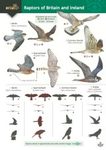By
Keith
3 May 2023
Written for Paperback
Given that the Tawny Owl is Europe’s most common owl it is surprising that this is the first book to focus solely on the species. Those wanting information have mostly turned to
Owls of Europe by Heimo Mikkola (T & AD Poyser, 1983) and the highly-respected scientific papers by Mick Southern from the 1950s/60s, and more recent times by Steve Petty, Steve Percival and Graham Hirons. So this species does deserve its own book.
The format follows that of a typical Poyser monograph by setting the scene for the species and its classification and physiology. Status and distribution are discussed by each subspecies, and the author includes
mauritanica in this section, suggesting that it should be split as Witherby’s Owl. This ignores the fact that all three of the classification authorities split this off as a new species called Mahgreb Owl
Strix mauritanica in 2020.
The next chapter discusses behavioural traits and includes a focus on daytime calling which the author feels is a new and growing trend. Is it? There is then a section on territory and species relationships. This includes discussion on possible interactions with Common Buzzards
Buteo buteo and Northern Goshawks
Accipiter gentilis. The author suspects that both species are causing declines in Tawny Owls. Certainly, a small number of owlets end up falling prey to Buzzards, but what data there is suggests this is insignificant. The more worrying impact on Tawny Owls could be from the growing British population of Pine Martens
Martes martes, a species which has been shown to predate owls at much higher levels in Europe. This is referred to in a later chapter.
A section on senses assesses how well these birds are adapted for their nocturnal activities. Similarly, a chapter on flight, plumage and moult discusses plumage variation across the species’ range among other topics. The section on feeding ecology is quite short by comparison. This is a surprise because there is a wealth of recent scientific papers from many parts of Europe where studies have thrown up interesting regional and habitat-related variations.
The chapter on nesting, fledging and dispersal is more substantial, bringing together many different aspects, particularly from British studies. One of these is the matter of sea crossings. Here the author suggests that despite evidence to the contrary, sea crossings may take place as evidenced by 100 birds ringed at eight British bird observatories. Given that every one of the 4430 retraps of Tawny Owls recorded by the BTO are of birds in Britain, I think any birds at observatories are likely to be local movements – not least as all were within a few miles of resident Tawny Owls.
In the chapters that explore factors that influence numbers, the author concludes that Britain’s growth in urban development is a major driving force in causing declines that have been noted for several decades. This is certainly backed up by recent survey work by the BTO. However, his suggestion that cats are likely to be another significant factor by catching small mammals in gardens seems far-fetched. Other research has shown that urban Tawny Owls specialise more in catching small birds.
There are also sections on conservation, folklore, superstitions and culture. There are some useful illustrations showing colour variations, and a set of attractive sketches by John Davis. However, the book is visually lacking in some other areas. For example, the only map of the European range is a poor monochrome representation with no country borders marked. Given that both European Atlases are referred to in the text, it is a missed opportunity not to use their maps showing both distribution and change. Meanwhile, a fairly irrelevant map of British bird observatories is given a full page!
In summary, this book lacks the succinct and authoritative nature that we have come to expect from the Poyser monographs. The style is more conversational and much of what is stated is personal opinion. The author is an acknowledged authority on Barn Owls, but that said, I fear that an opportunity has been missed here.












































